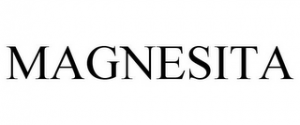When you have a highly descriptive mark, even hundreds of millions of dollars in annual sales under the mark may not be enough to establish trademark rights.
 Magnesita Refractories Company (MRC) applied to register the mark MAGNESITA in two trademark applications for refractory products in class 19 and for online services related to using refractory products in class 37.
Magnesita Refractories Company (MRC) applied to register the mark MAGNESITA in two trademark applications for refractory products in class 19 and for online services related to using refractory products in class 37.
The USPTO found that the mark was generic for refractory products in class 19, and the appeals court agreed in In re Magnesita Refractories Company, 2016-2345 (Fed. Cir. 2017).
The court also found that MRC failed to show that the mark acquired distinctiveness in connection with the class 37 services. A mark has acquired distinctiveness when “the primary significance of the term in the minds of the consuming public is not the product but the producer.” Stated another way, the mark needs to act as a source identifier and not be merely understood by the purchasing public as descriptive of the goods/services on which the mark is used.
The court noted that “If a term is highly descriptive, the applicant faces an elevated burden to show acquired distinctiveness.”
MRC submitted evidence showing that MRC (1) sold $100 million in refractory products under the MAGNESITA mark during half the 2010 year and (2) sold $200 million or more annually in refractory products under the MAGNESITA mark from 2011 to 2014. The USPTO TTAB recognized that these sales figures were substantial. Nevertheless, they were not sufficient to establish acquired distinctiveness.
MRC also submitted a declaration attesting to exclusive and continuous use of the mark since 2008. This too what not sufficient to establish rights in the mark.
The court found that MRC should have submitted evidence demonstrating how the public perceived MAGNESITA as source indicating. Such evidence is usually in the form of a trademark survey and/or direct testimony of customers. But surveys are expensive to conduct, which is probably why MRC didn’t conduct one. Also, regarding direct testimony, companies are sometimes reluctant to bother their customers with requests for testimony and other help in legal proceedings.
Nevertheless, when you have a highly descriptive mark, even hundreds of millions of dollars in annual sales under the mark may not be enough to establish trademark rights. You will probably need to pay to have a trademark survey conducted. And, even that’s no guarantee. What if the results of the survey show that your mark is not recognized as source identifying by the relevant group of consumers?
Choosing a highly descriptive mark can be expensive, both in obtaining trademark protection and in defending the mark against attacks of others. Therefore, if you have the opportunity, you should consider choosing a stronger mark at the outset.